Tariffs & TikTok - What Small Businesses Need to Do to Prepare for 2025

The ever-shifting landscape of government policies and global economics is at it again! This time, it’s a two-headed dragon—proposed Trump tariffs on imported goods and a potential TikTok ban in the U.S. While these issues might seem disconnected at first glance, they share one critical point of impact: small businesses (and their consumers). Whether you're a boutique hair company or a small artist, understanding these developments is essential to staying ahead of the curve over the next few years.
Let’s break it down. Watch the Live
What’s the Deal With the Proposed Tariffs?
Recently, President-Elect Trump proposed tariffs that would increase taxes on certain imported goods. His goal to boost domestic manufacturing and retaliate against countries he blames for our immigration problems will effect products consumers buy and you may sell. For example, products like hair extensions, textiles, electronics, and even raw materials could see higher costs as a result.
What does this mean for small businesses? If you rely on imported products or materials, you could face price hikes that squeeze your profit margins. Even if you’re in the service industry, increased costs across supply chains could lead to higher prices on everyday goods and services, affecting your customers’ already diminishing spending power.
Source: According to the U.S. International Trade Commission, in 2023, imports impacted by similar tariffs saw price increases ranging from 10% to 25%, with small businesses bearing the brunt of the additional costs.
The TikTok Ban: More Than Just Viral Dances
The TikTok ban has re-entered the political spotlight. U.S. lawmakers are pushing for the ban over national security concerns, claiming TikTok’s Chinese ownership could lead to data misuse. If this legislation gains traction, TikTok could be removed from U.S. app stores or its use could be severely restricted.
Small businesses that depend on TikTok for marketing, lead generation, and e-commerce are understandably worried. TikTok’s algorithm has been a goldmine for smaller brands, offering unmatched organic reach and customer engagement. Losing access could mean scrambling to redirect marketing strategies to other platforms that don’t offer the same rapid growth potential.
Source: A recent Pew Research study noted that 44% of TikTok users make purchases directly through the app, a figure that includes a significant number of small businesses tapping into the TikTok Shop.
Solutions for Small Businesses If These Changes Happen
Now that we know what’s on the table, let’s focus on actionable solutions to weather these potential storms.
1. Diversify Your Supply Chain
If you’re reliant on imported goods that may face tariffs, it’s time to explore domestic or alternative international suppliers. Start conversations now with manufacturers or distributors closer to home. Additionally, consider negotiating bulk purchase agreements before the tariffs take effect to lock in current pricing.
2. Boost Customer Loyalty and Retention
Customers are more likely to stick with you if they feel connected to your brand. Use loyalty programs, email newsletters, or exclusive discounts to keep them engaged, even if you need to adjust prices. A strong customer base is a safety net during turbulent times.
3. Prepare to Pivot Your Marketing Strategy
If TikTok goes dark, diversify your social media presence now. Focus on platforms like Instagram Reels, YouTube Shorts, or even Pinterest Idea Pins, which offer similar video-sharing features. Email marketing and text campaigns can also provide direct and reliable communication with your audience.
4. Invest in Owned Channels
Relying solely on third-party platforms like TikTok is risky. Consider developing your website, blog, or e-commerce shop to drive traffic directly to your brand. This way, no matter what happens on social media, you’ll have a stable digital home base.
5. Diversify Your Product Offering
Many small businesses may need to adapt by introducing new products or services that don't rely on affected goods. Consumers will also feel the impact of the current economic climate, so raising prices like in 2023 won't be well-received if it pushes them beyond their budget. Consider creative solutions such as lower-cost services, affordable options, or digital products and services.
The Bottom Line
Yes, these changes might feel overwhelming, but with preparation and adaptability, small businesses can navigate this evolving landscape. By diversifying suppliers, rethinking marketing strategies, and strengthening customer loyalty, you’ll not only survive—you’ll thrive.
Keep your head up, stay informed, and make the moves now that set your business up for success.
(Note: This article is intended to provide general information and solutions. For specific guidance, consult with an industry expert or advisor.)
0 comments



